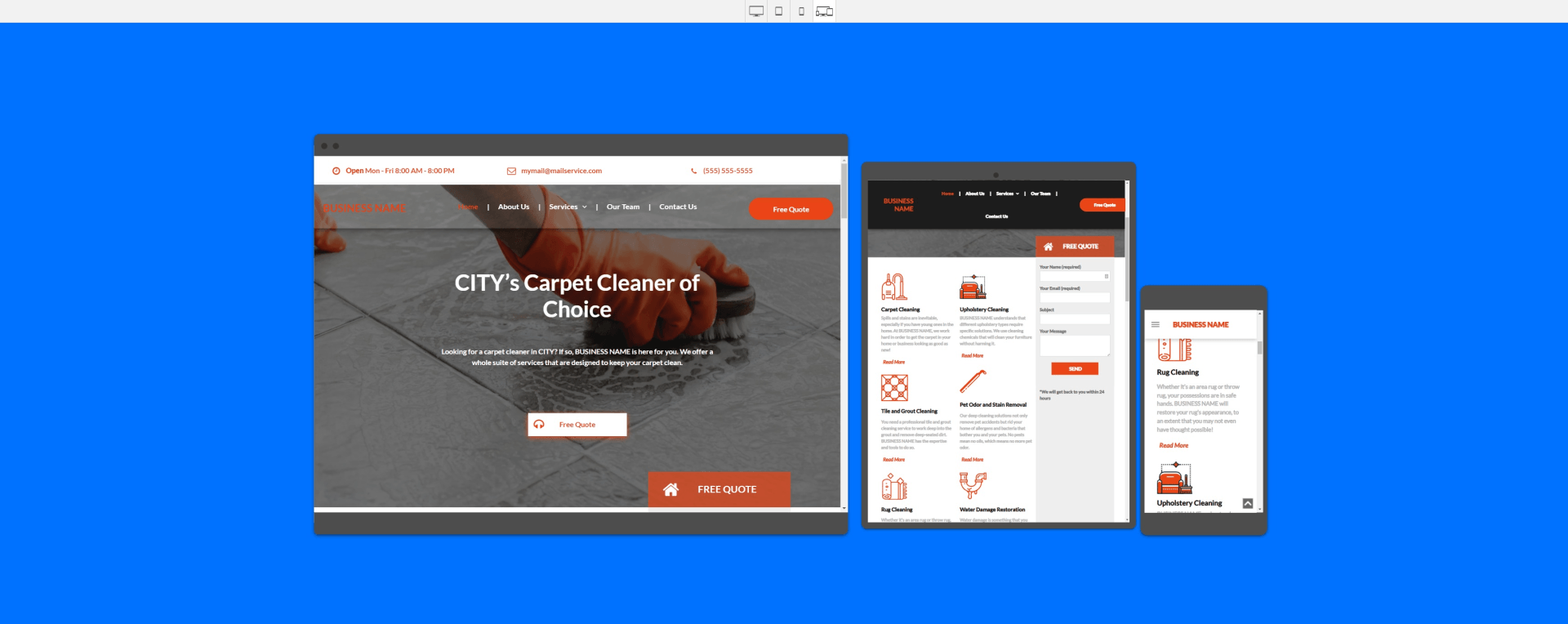
9 Proven Restaurant SEO Strategies To Increase Business
In this digital age, every restaurant needs an effective SEO strategy. Did you know that almost half (46%) of all Google searches are seeking local information? Nearly three out of four Google users searching for local businesses end up calling or visiting a store within five miles.
A good restaurant SEO strategy will drive more foot traffic to your eatery and help you get more delivery orders (if you offer that option). Here are nine essential SEO strategies for restaurants.
#1. Target the Right Keywords
If you want your website to rank, it’s important to target the right keywords. Here are some things you should look for when choosing keywords:
- Buyer intent
- Local aspect
- High search volume
- Low competition
For example, let’s say you have a Thai restaurant in San Diego. You might target keywords like:
- Thai cuisine San Diego
- The best Thai food in San Diego
- Where to eat Thai food in San Diego
- Thai food in San Diego open near me
Double-check all these keywords using a keyword tool to ensure the competition is not too strong and that they have an adequate monthly search volume. Note that the last keyword has strong buyer intent – the person using that keyword obviously wants to eat Thai food.
You should target these keywords in your blog posts, pages, and articles. If your main target keyword is “best Vietnamese cuisine in San Jose,” for example, you can use it all across your website.

#2. Publish an Online Menu, Contact Details, and Direction
One of the main things people will be looking for on your site is your menu. Which dishes do you offer? What are the prices?
Create a menu section where people can browse what you offer before visiting. That way, there won’t be any disappointments when they visit your restaurant. Furthermore, make sure to include quality graphics alongside the menu options. Ideally, hire a photographer to take real photos of dishes your chef has created.
People will also be searching for your contact information. Make sure to display your phone number prominently across your entire site, such as in your header. You can also have a contact page where people can get in touch with you by filling out a form on your site.

#3. Publish Quality Content
If you want your site to rank high, you must publish quality content. A website that only has your menu, a contact form, an about page, and other basic details has very thin content, and it will be hard to establish your site’s credibility in Google’s eyes and increase your Domain Authority.
Start a blog, and publish new posts at least a few times per month. Your posts can cover recipes related to the cuisine you specialize in, announce promotions or deals, or cover local events you partake in.
Another idea is to cover general information. For example, if you run a Mexican restaurant, you can talk about the history of Mexican cuisine, the top best Mexican dishes, the difference between local dishes in different parts of Mexico, and more. Just think of content that would be interesting or valuable to your readers in some way, and target high-volume keywords.

#4. Optimize Your GMB Profile
Your Google My Business profile is an important cornerstone of any restaurant SEO strategy. It will help you rank your website higher, and it will also help you rank in the local pack and Google Maps.
Many people don’t even use Google to search for restaurants; they simply head straight to Google Maps and enter keywords such as “five-star restaurants” or “Indian food.” If you can rank high on Google Maps, you will get more foot traffic, as people using Google Maps are often ready to head to your place right away.
For example, they may be in the car with friends looking for a place to eat.
At the same time, people using Google on their mobile or desktop browsers can find you in the local pack, which is a short list of nearby businesses that appears when people search for local companies.
So, how can you optimize your GMB profile? Here are some quick pointers:
- Choose the right primary category and secondary categories. Look at the list; possible results may include restaurant, Italian restaurant, pizza, etc.
- Ensure you have your contact details filled out and your location is correct. Fill out other important information, such as your hours of operation.
- Upload quality images of your dishes, menu, exterior, and interior. Try to take pictures of customers enjoying your food.
- Encourage reviews and respond to them.
- Fill out your menu details, including dish options, explanations, and prices.
- Publish GMB posts with updates about new menu additions, sales, two-for-one offers, and more.

#5. Get Citations From Directories
Another cornerstone of local SEO is citation building. Building citations in local directories will boost your site’s credibility in Google’s eyes. The more citations link back to you or even list your business without a link to your site, the better.
Just make sure your details are correct across all directories. In other words, your business name, phone number, and address should be formatted and spelled the same way on all directories. If you can, get a link back, even if it’s a nofollow link.
Large directories include:
- TripAdvisor
- Apple Maps
- Bing Maps
- Yelp
- Citysearch
There are also directories that focus exclusively on restaurants, and there may also be directories focusing solely on the cuisine you offer, such as Nigerian food. In addition, look for local guides that cover your city or town.

#6. Build Relevant Backlinks
While citations are important, they aren’t substitutes for regular backlinks, which you must also build. Backlinks come from blogs, press distribution sites, news sites, and other sources instead of directories.
Getting a backlink from an influential blog with a high
Domain Authority can significantly boost your website’s SEO rankings. The main thing is to focus on quality over quantity, as you don’t want hundreds or thousands of backlinks from link farms or low-quality sources.
Not only will that not help you in the long run, but it can cause Google to penalize your site. Therefore, watch out for link-building services that promise quick results that seem too good to be true for the price, as they may be using black hat methods.

#7. Create Social Media Profiles
Social media profiles help your website rank, and they also rank in search engine results themselves. For restaurants, Facebook and Instagram are the two most important platforms to have a presence on.
On Facebook, create a Facebook page (not a personal profile). That allows you to publish posts as a business. Make sure to fill out your restaurant’s details, including your address, phone number, hours of operation, etc.
Instagram is important as well, as it allows you to publish pictures of your dishes and restaurant. Make sure you change from a personal profile to a
business profile, as that will allow you to add contact details and see post analytics.
I recommend uploading stories and turning them into
highlights. You can have one highlight dedicated to displaying your menu, another to showing pictures of your drinks, another of happy customers, etc.
You can also publish videos on Instagram (reels). Be active, use hashtags, and engage with people commenting on your posts.
Remember to respond to DMs promptly on both Instagram and Facebook Messenger.

#8. Create Profiles on Food Delivery Apps
This step is optional because you might not be interested in offering delivery services through apps such as Uber Eats, Grubhub, and Doordash. There are pros and cons to doing that.
The pro, of course, is that you can get many customers who don’t want to leave their homes. Since Covid, many people have become accustomed to ordering in. You also won’t have to hire your own delivery drivers.
On the other hand, these apps do charge commissions, so you will have to raise your prices compared to offering delivery by yourself.
There is one advantage of listing yourself on those sites that not many people talk about, though, and that is the effect it can have on your SEO. Many times, when people search for your restaurant on Google, your Uber Eats or Doordash profile can show up. People can then browse your menu and create a delivery or pickup order.
Furthermore, getting good reviews on these apps may help boost your website’s SEO.

#9. Post Testimonials and Reviews
On your website, post testimonials from happy customers. Encourage people to leave positive reviews on platforms like Google, Facebook, Yelp, and TripAdvisor. Not only will it help your profiles on those platforms rank higher, but it can also boost your website’s rankings.
Note that most platforms prohibit incentivizing or paying for reviews. You’ll have to look at the guidelines of each platform for the finer details. In addition, the FTC has its
own guidelines
regulating incentivized reviews.
However, that doesn’t mean you can’t encourage people to leave reviews in other ways. For example, at checkout, you can have a QR code that people can scan that leads them to your Google profile. Caption the QR code with something like, “Let us know your feedback!”
You will get negative reviews. It’s just a matter of time. Therefore, it’s essential to know how to respond to them.
Here are some tips:
- Avoid attacking the customer.
- Be polite and respectful.
- Don’t engage in a long conversation. Be brief and say you have reached out to them. If you can’t contact them directly, give them a number or email they can use to get help and resolve the issue.
- Report fake reviews. If the platform does not remove them, respond and make sure people know the review is fake, a competitor left it, or the reviewer was never a customer of yours.

Start by building a website, creating a GMB profile, and getting citations from major sites like TripAdvisor. The next step is building up your website and profiles by publishing regular content and getting reviews. Remember, you need to be in it for the long run – restaurant SEO is a long-term game, not something that brings overnight results.







Unlock the Unlimited Potential of Your Business
Our professionals stop at nothing to provide excellent digital marketing solutions.
Do you want your business to be found all over online? Small Biz SEO can help. We are a marketing company that specializes in SEO for small business growth. Our team of SEO experts can help you get the most out of your website and increase your online visibility.
Our Services
All Rights Reserved | Small Biz SEO






















